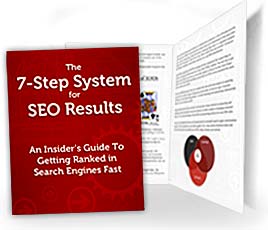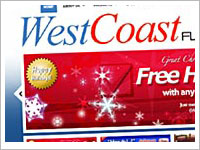
I’m unique, you’re unique.
So, it should seem rather clear that the first step to being successful business is to find a market with a want or a need, and create a product to meet that need. A business exists only because customers want it to. If you want to try and create something and then find someone to sell it to, you’re already adopting a losing approach.
Remember the days of telemarketing, when people would call you cold to make you buy some silly thing that you had no desire or need for?
Well, take the very valuable lesson from that example. Social media works the same way!
You cannot just spam people so that they notice your company, or buy a bunch of fake followers. Find your market online, and GIVE them what they want. Make it OBVIOUS to them that YOU are the answer they are looking for that fulfills their want, their passion, their need, whatever.
So that, in the initial encounter with your business online, they know instantly right away that “Yes, this sounds like it’s for me.”
The way to do this is by writing your very own Unique Sales Propositions.
If you try to broach the idea of a USP, most small business owners just go blank and blink in confusion.
Huh? ….What’s so special or unique about my company? It’s simple, we’re just trying to sell this little product. We’re just a small business. My industry is different, we’re just zapping bugs here. Right?
Wrong.
Even if you ABSOLUTELY can’t come up with a simple little unique sales propsition for your business… you can still uniquely position your business very easily for maximum profits.
So, to provide the final word on this topic I’m going to show right now a very simple way to uniquely position your business in only a few minutes.
This is important. Most people want to just skip this and try to find some gimmick or some little-known technique so that they don’t have to think. They come wanting to discuss execution, and are somehow surprised when my suggestions are all in reference to preparation. An hour of preparation saves ten.
Want a simple way to make your product or service more valuable? In your USP, tell WHO your product is for.
The simple act of moving your product from broad and generic to niche automatically permits an increase in price, with no actual change to the product itself.
Once again…
The simple act of moving your product from broad and generic to niche automatically permits an increase in price, with no actual change to the product itself.
The next step is to write your USP (Unique Selling Proposition) for the audience that you are trying to reach. One easy way to do this by positioning yourself in a CATEGORY of ONE.
Format: The Largest / The Leading Business/Organization/Etc. serving a particular WHO.
Examples:
- http://www.sempo.org/ – First thing you see on the Home Page: “SEMPO is the largest nonprofit trade organization in the world serving the search and digital marketing industry and marketing professionals engaged in it.”
- When I created my WordPress training product, I dubbed it at birth “The Web’s Largest Single Source of WordPress Training for Graphic Designers, Web Designers, and Creatives” (you can see an example of this USP in action at wordpressdesigninstitute.org)
If you’re not the largest or the best serving that particular market, you can combine two target markets and make it certifiable fact.
Example:
- http://www.covario.com/ – Slide #2 : “The leader in search marketing agency services and seo software for the world’s largest brands.” (they’ve been saying this since their inception – obviously they developed a combination of services to provide for a certain WHO that made them unique)
- Joe Sugarman, back in the 60’s, called his company JS&A: “America’s Largest Single Source of Space-Age Products.”
- Dan Kennedy in 1983 called SuccessTrak: “The Largest Integrated Publishing and Training Company on Practice-Building Serving the Chiropractic and Dental Professions.”This was true because it was the only company at the time mixing the two kinds of doctors in the same seminars, selling them the same programs… and Kennedy kept to himself the fact that it was the only one of its kind.
This is a strategy of establishing authority for one’s business using clever truth. This matters VERY MUCH in social media as you have to be able to summarize what your business is all about in a single sentence, so that your WHO knows that your business is for them.
Next, to reach your market using social media you have to really speak to them in a language that engages them. Before I created my training product for my market, I went on sites like LinkedIn and asked my market just what the heck was on their minds, what they wanted, etc.
An example survey that I posted on LinkedIn is here: http://linkd.in/wN9q8u
From simple question surveys like this I got a TON of free feedback from my market which has proved INVALUABLE in my marketing and how I speak to them.
For more information about how to develop a social media strategy from the ground-up, please listen to my audio interview with Minh Huynh (points of interest include the MOCCHI format he’s developed, his “blue-ocean” strategy, and quite a bit more): https://s3.amazonaws.com/WP_
Social media is all about engagement and influence. You have to display to clients, potential partners, etc. that you’re someone worth talking to. It begins with unique differentiation.
Do you have any questions or need help in coming up with a USP for your business? Let me know by dropping me a comment, or getting in touch.













